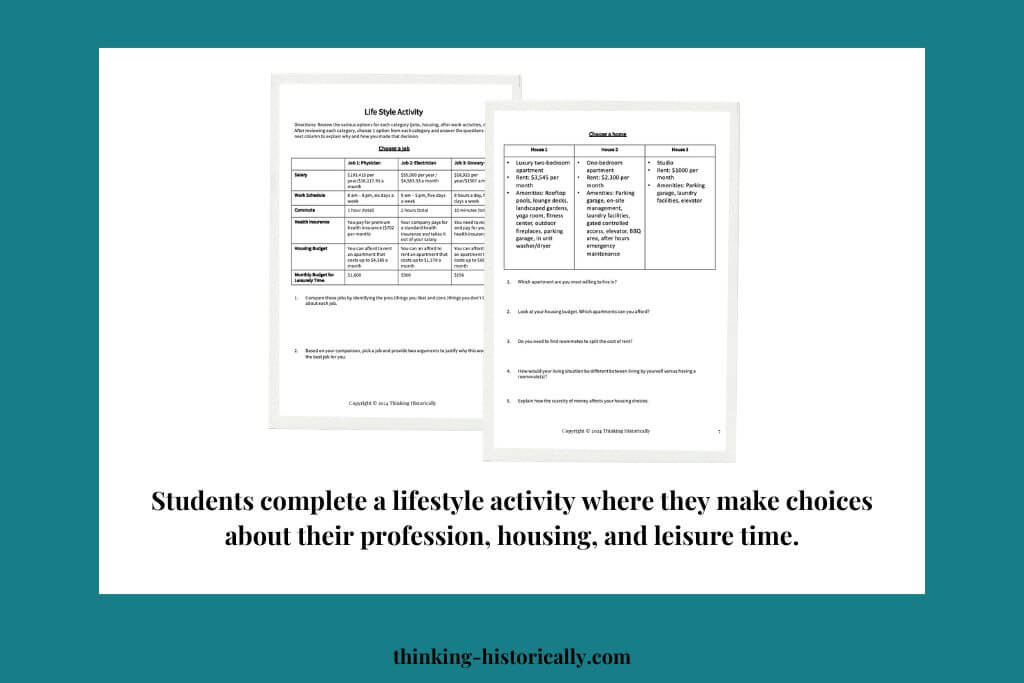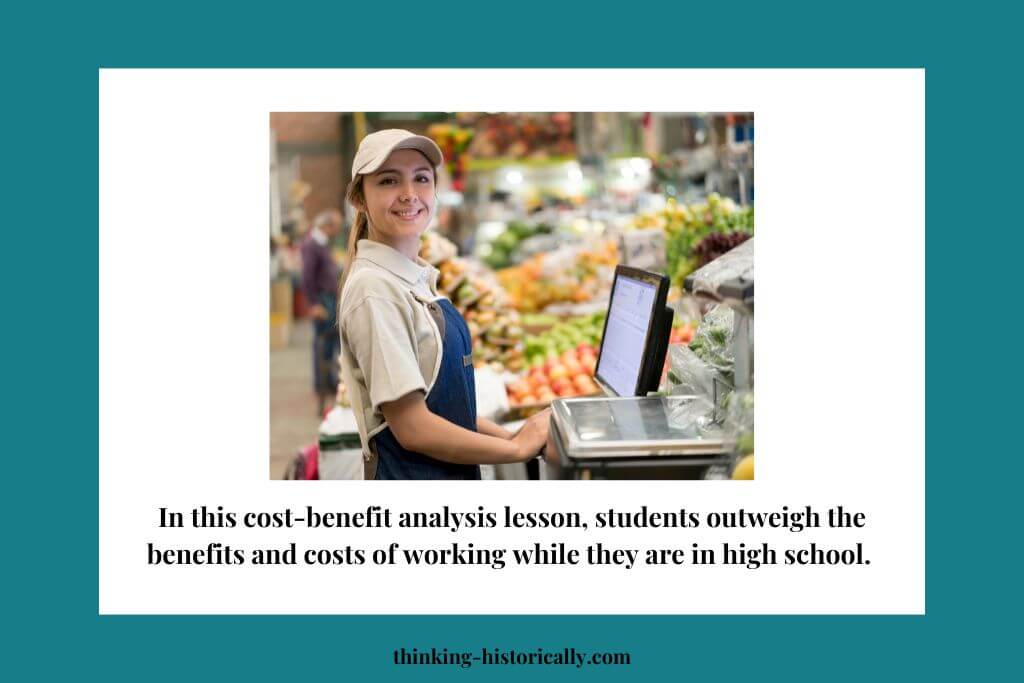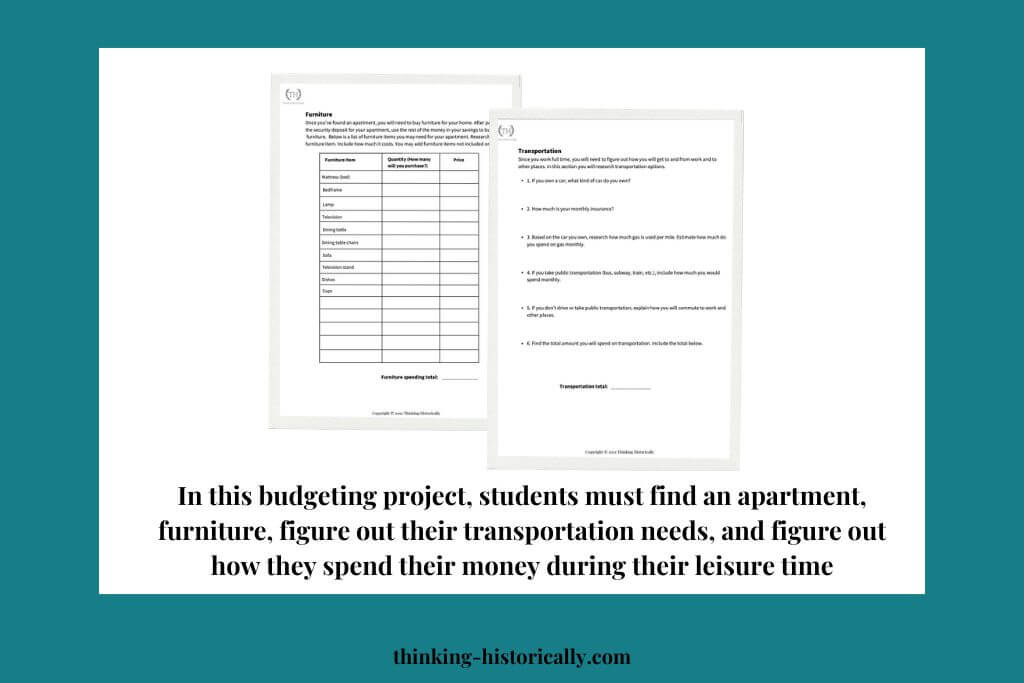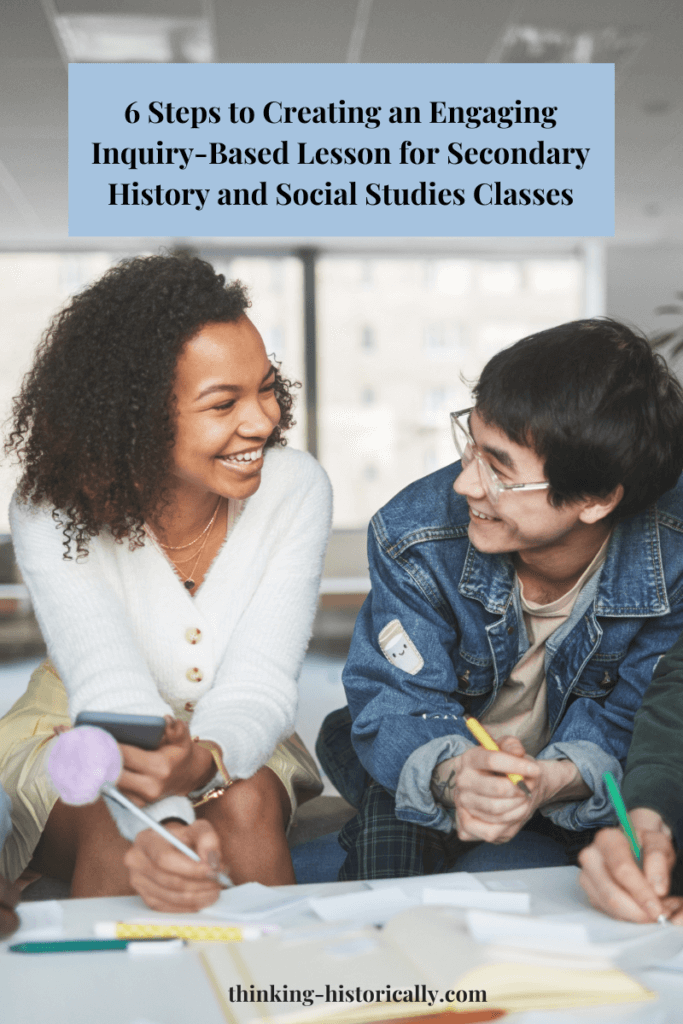High school economics is more than just graphs about supply and demand. Economics is all about the choices that we make and the outcomes of those choices. Economics can help students think more critically about the world around them. However, creating high school economics lessons that connect to students’ lives can be tricky. I know because I’ve been there, especially in my first few years of teaching high school economics.
Trying to create buy-in on the first day and weeks in your economics class is tough, but it doesn’t have to be! My Economics Basic Concepts Bundle includes 6 lessons and 2 projects that you can use to kickstart your semester of economics.
These lessons cover foundational concepts that connect with students’ lives. If you’re new to teaching economics or have multiple social studies classes to lesson plan for, this bundle is you! It will save you time and energy and you’ll get buy-in from your students!
In this blog I’ll give you a run down of the lessons and projects in this bundle.
Break Down of Lessons in Bundle
Lesson 1: Introduction to Economics
The first lesson in this bundle is a simulation. Students take on the roles of consumers and producers. Consumers are given fake money and producers are given pencils. The goal is for consumers to buy the MOST pencils and for producers to sell the MOST pencils. Students are given about 15 to 20 minutes to buy and sell.
After the simulation, students participate in a class discussion to debrief the simulation. The key concepts related to this lesson are incentives, producers, consumers, scarcity, price, and demand.
This introduction lesson gives them an overview of what they will learn in the days to come and is a great way to produce buy-in with your students! Check out my post, if you’d like to read more about this lesson and how you can recreate it in your classroom!
Lesson 2: Scarcity and Choices
The second lesson focuses on scarcity and choices. This lesson uses real-life scenarios to hook students in. In this lesson, students learn the definitions of scarcity and choices and then are given a lifestyle activity to complete.
In the lifestyle activity, students must choose between various professions. These professions include: physical, electrician, and grocery cashier. After choosing a job, they must choose their housing and what to do for their leisure time. As students make their choices, they must reflect upon their income and whether or not their choices fit their lifestyle. If not, they must make some adjustments.

In this lesson, students see how scarcity and choices play out in their personal lives based on the decisions they make. You can read more about this lesson by reading my post.
Lesson 3: Scarcity and Utility
For this economics lesson, students ponder over the question, “Why do diamonds have a higher monetary value than water, even though water is essential to live?” This question also serves as a hook to engage students. As students learn the definition of utility (the satisfaction one gets from products or services), they reflect on what gives them utility in their own life.
Throughout the lesson, students are given examples of products/services that provide utility and are given opportunities to discuss their opinions with their peers. By the end of this lesson, they will be able to explain why diamonds have higher monetary value than water.
Lesson 4: Trade-offs and Opportunity Costs
In this lesson, students learn the definitions of trade-offs and opportunity costs and then are given various scenarios to apply their understanding of opportunity costs. With each scenario, students must identify the trade-offs and opportunity costs.
By the end of this lesson, students will be able to reflect upon their own life to identify trade-offs- and opportunity costs they’ve experienced.
Lesson 5: Cost-Benefit Analysis
In this cost-benefit analysis lesson, students are presented with relevant examples to make economics come alive! In this lesson, students question whether it is worth to work during high school. This lesson is a great way to show students how economics plays out in their own lives. If you’d like to learn more about this lesson, I wrote a post about it. You can read it here.

Lesson 6: Cost-Benefit Analysis
The next lesson in this bundle is another cost-benefit analysis lesson. This lesson uses relevant examples to connect with students. In this lesson, students question whether or not it is worth it to work for a ride-share company full time. Throughout the lesson students analyze the advantages and disadvantages of driving for a ride-share company.
Budgeting Project
After learning these foundational economics concepts, students complete a Budgeting Project (read more about this project by clicking the link). I love this project because it ties in all the concepts they’ve learned in a relatable way!
In this project, students are given a hypothetical situation where they are employed and considering looking for a place to live. With their monthly income, students must find an apartment, furniture, figure out their transportation needs, and figure out how they spend their money during their leisure time. Students complete a reflection and explain whether or not their income first their lifestyle! Students love this project because budgeting and apartment hunting is what many of them will eventually do once they graduate from high school!

Conclusion
If you’re a high school economics teacher, this Basic Economics Bundle is a great resource to help you kick start your year! It will also save you time since the high school economics lessons are already made for you. Through these lessons, students will see how economics plays out in their own personal lives!
Happy teaching!


